
 |
|
Nestled high in the Andes mountains is Quito: the capital city of Ecuador. Quito's elevation is around 9,200 ft and it lies in a valley on the western slopes of Pichincha; an active volcano. It is the only world capital that begins with Q and is the oldest capital city in the South America. Tradition says that Quito was founded on December 6, 1534 by two Spanish conquistadors, Sebastian de Benalcazar and Diego de Almagro |
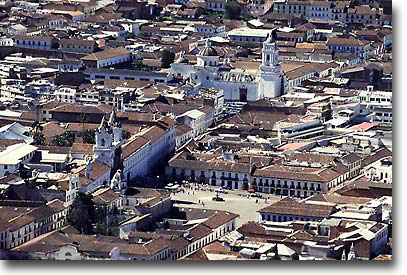 |
 |
Of course, Benalcazar did have help founding Quito from 204 Spaniards whose names can be found on placks fastened to the Metropolitan cathedral facing Quito's main plaza. The Incas supposedly had a city on the site called Quitu built sometime around 1480, but they had burned it shortly before the Spaniards arrived to prevent them from capturing it intact as they had captured Cusco (in Peru) earlier. The Spaniards then apparently destroyed what had remained as they fruitlessly searched for gold and other precious objects and used the stones to construct the city. The site of Quito and especially the area around the volcano Ilalo was dwelled by various tribes for hundreds of years before the arrival of the Incas. |
|
Benalcazar and Almagro actually named the city "Villa San Francisco de Quito" in honor of Franciso Pizarro, their friend, partner and leader in the conquest of the Incan empire.
Ironically Pizzaro wasn't much of a friend... Pizarro soon had Benalcazar replaced as govenor of Quito with his own brother, Gonzalo Pizarro. Almagro fared worse as Pizzaro legally cheated Almagro out of his title to the city of Cusco. Almagro briefly fought to take it back, after which Pizarro had Almagro killed. But years later, Almagro's friends and supporters took revenge and managed to kill Pizarro in his Lima home. |
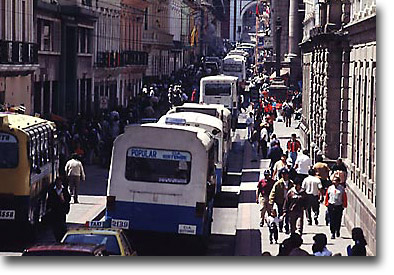 |
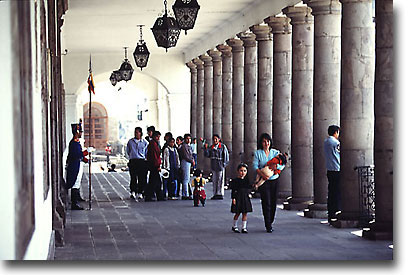 |
Benalcazar built a house in Quito which now houses a library, some offices, a small stage and a few artifacts in one wing. If it is open, you can visit the courtyard for a glimpse into the past.
Quito was a site of government for the Spanish Crown for numerous years. The original building called Carondolet is now the presidential palace and is located on the plaza of Independence. Quito has been the site of skirmishes between those who sought independence from Spain and those who were loyal to the crown.
|
|
On August 10th, 1809, a small group signed Ecuador's "Declaration of Independence" from Spain in the cathedral of San Augustin.
Actually they were really declaring independence from a Napolean controlled Spain since Napolean replaced King Fernando VII with his brother. The revolutionaries managed to gain control of the city of Quito for a few days. Unfortunately, none of the other regions of Ecuador joined their effort. To make matters worse the ousted president, Ruiz de Castilla was allowed to send letters to Peru and Colombia requesting troops to restore him back into power.
Upon the troops arrival, Castilla broke the amnesty agreement with the revolutionaries and had them placed in a cellar jail (recently renovated and a very nice museum) immediately south of Carondolet. They were held there until August 2nd of 1810 when a group of fellow patriots sought to break them out of jail. While some were freed, the soldiers in a fit of rage killed those who were still inside the jail and then went out in the plaza and throughout the city streets killing anyone on sight. Tradition says the killing continued until a bishop known as Cuero y Caicedo walked through the streets with a crucifix and a few friars pleading with the soldiers to stop killing. By that time the soldiers had managed kill around 300 people. Each August 10, there is a ceremony to remember those who died in service to their country. |
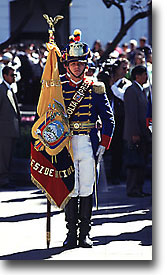 |
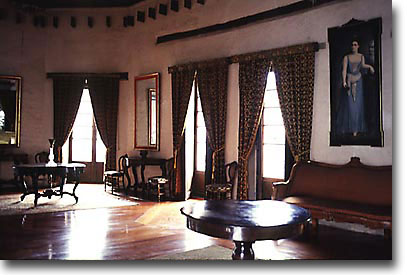 |
Quito eventually gained freedom from Spain thanks to the Napoleanic wars in Europe and Simon Bolivar and Mariscal Antonio Jose Sucre in the Americas. On the May 24th, 1822 battle of Pichincha, Sucre conquered the troops still loyal to Spain and Quito was finally free. There is a monument and museum built on the traditional site of the battle. Sucre's house has also been turned into a museum and is roughly two blocks south of the main plaza. |
|
Mariscal Antonio Jose Sucre was the namesake of Ecuador's currency, however the U.S. dollar is now Ecuador's official currency. Sucre's remains can be found in a small room within the Metropolitan cathedral.
Some find it of interest that Sucre was from Venezuela as was Juan Jose Flores, Ecuador's first President who liberated Ecuador from Simon Bolivar's Gran Colombia. Ecuadorian politics have been stormy at times with 39 different governments from 1901-1948. The office of the presidency had been relatively stable till 1997 when President Abdala Bucaram was declared incompetent by congress. For a few days at least, three people claimed to be the legitimate president at the same time. Things returned to normal with the election of Jamil Mahuad in 1999, but he was ousted from power on Jan 21, 2000 by General Mendoza, former supreme court justice Carlos Solorzano and Indigenous leader Antonio Vargas. They remained in power as a three member presidency for just a few hours until General Mendoza resigned since they had no political backing. This led the way for the Vice-president, Gustavo Noboa to be placed into power. |
 |
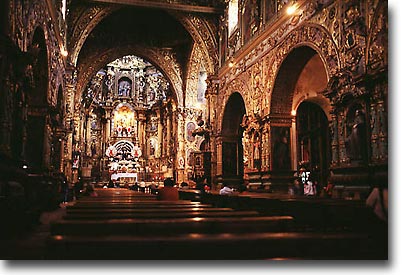 |
Much of the Quito's attraction today lies in it's religious history. "Quito School" religous art is scattered through the numerous cathedrals and museums in the city. The San Francisco cathedral was began on January 25th, 1535 and took some 70 years to build. It was built on the traditional site of the Inca Huayana Capac's home and gardens. Ironically, one of Huayana's sons and two of his grandsons (by the last Inca Atahualpa) lived and went to school at that very convent. The convent now houses a very nice collection of religous art. A ticket to the museum also gets you up to the choir loft which by itself is well worth the entrance price. The choir loft is decorated with images of various martyrs who died for their faith. |
|
San Agustin is also well worth a visit as it is the site of the signing of Ecuador's declaration of independence. Ironically enough, the signers were buried there after the 1810 massacre.
Some of the best religous art is actually housed at the Casa de la Cultura museum that is run by the Ecuadorian Central Bank. This museum also holds a large collection of ceramics, gold, silver and textiles from Incan and other pre-colombian tribes within Ecuador. It is a definite must-see for visitors to Ecuador. |
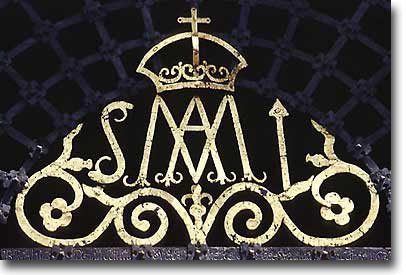 |
 |
Other points of interest in and around old Quito are the new Quito City Museum, the Colonial Art Museum, The Catholic University Museum, Santa Domingo plaza, La Compaņia, the Bascilica, the Sucre theatre and the Virgin overlooking the city on the Panecillo.
I should add that the Panecillo provides some of the best views overlooking the city. Quito is a modern city, yet is full of history and tradition. In fact UNESCO declared Quito a World Cultural Site in 1978. I hope you've enjoyed a brief visit to historic Quito. In the future, we'll explore some of the more modern aspects of Quito. |